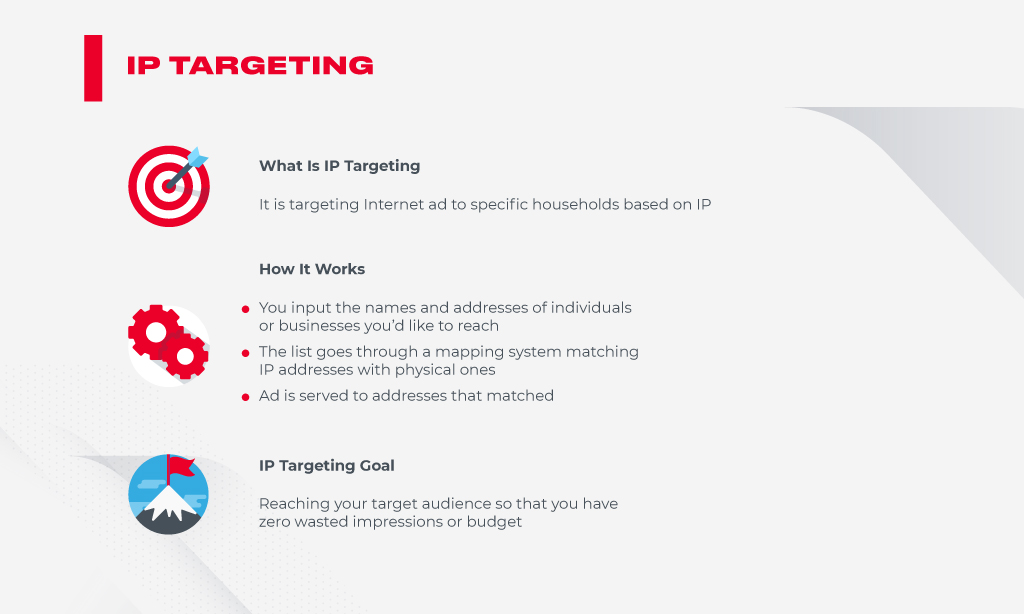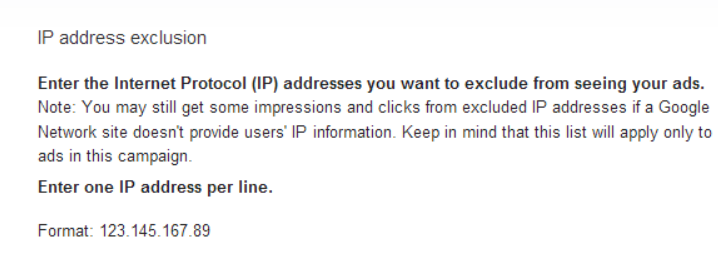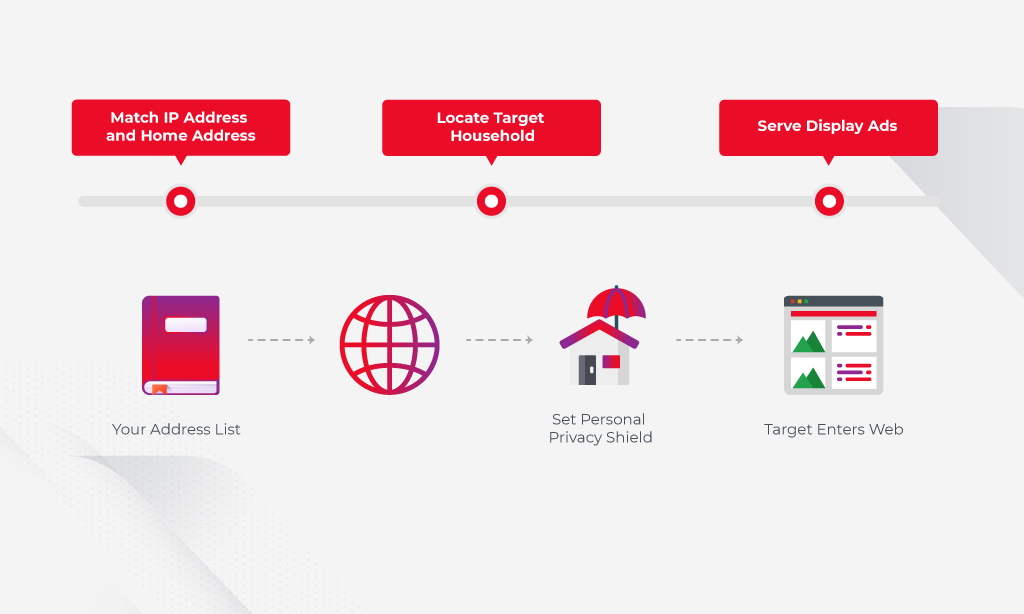IP Targeting Makes Your Online Ad Cost-effective
In this article Rocky Osborn, Senior Vice President, Global Business Development & Client Success at Innovecs, a global software development company, talks about the key peculiarities, advantages, and mechanics of IT targeting.
An average user is given 5000 ads online every day. Businesses must come up with new solutions to stand out and deliver their messages through the virtual wall of advertising media.
The International Advertising Bureau (IAB) reported on user’s “Likes” and “Dislikes” in its annual ‘Consumers and Advertising – Key Stats’:
- 71% of consumers prefer ads targeted to their interests;
- 3 out of 4 consumers (75%) enjoy more personalized ads.
To take advantage of the key concept outlined above, a business needs its digital solutions to target better through worthy options such as IP targeting advertising and cookie targeting in B2B or B2C sector. Let’s see how it works.
What is IP Targeting?
While it’s possible to deliver your ad using the PPC (pay-per-click) model, you won’t know for sure whether your message reaches the right audience. Most online paid campaigns do not offer you much control over who sees your commercials. It’s estimated by CI cloud-native platform for media creators that 50% of publisher traffic is bot activity (fake clicks).
If robots scroll the website, act like humans, and watch your paid ads, you get a high viewability rating but zero conversions. These site visitors won’t be transformed into buying customers.
Location-based advertising (LBA) or IP targeting can be a solution as they are advertising industry trends.
IP Targeting Profile
IP targeting is a paid ad technology focused on collecting data about visitor’s locations and delivering information to a specific user. People do not take any extra steps to view tailored information. Internet providers assign IP addresses to their devices. And, if IP targeting is included in a company’s SEM (search engine marketing) strategy, the brand is addressing relevant users.
It’s not only for the benefit of businesses but also for peoples’ online experiences. Adlucent, an analytics company and leader in retail shopping data research, reported the following customer benefits from ad personalization:
- 46% of the users like that it helps to reduce the number of irrelevant ads;
- 25% of people notice they discover new necessary products via personalized advertising;
- 19% of the customers notice targeted commercials ease their online shopping experience.
YouGov, a British market research company, calculated that 43% of consumers don’t mind sharing personal data with brands to get more views of relevant discounts, promotions, and deals nearby.
So, if you have decided to engage more committed customers using the IP targeting technique, it’s worth setting up either IP targeting filters in Google Adwords or buying customized AdTech solutions. Here is a brief overview of how it works.
How It Works
If business owners are interested in messaging people within 5 kilometers of their restaurant, their ad platform will need to use IP filters. Targeting process comprises about 30 public data elements (timestamps, routine information, device types, closest cell towers, etc.) to match an IP address to the home address as it is shown in this video.
IP addresses are not always matched with specific geolocation. Some countries even prohibit matching IP to user PII (personally identifiable information). Some companies can get a household information database to stick it to correct IPs. The process involves a huge database collected from different sources and special software to process and split out the list of relevant IP addresses.
- IP does not correlate with a physical location;
- Sometimes, ISPs and networks use dynamic IPs (every time the users go online they are assigned new IP address);
- Proxy servers (some companies, like AOL, use only a few servers for their users, so whenever those users are using AOL Internet services, their IP addresses are always linked to AOL’s server in Virginia.);
- Centrally located networks are typical for big enterprises, and their computer networks are stuck to a centralized IP address (which matters in B2B targeting);
- Targeting the right person (if you’re trying to hit the teens via IP geolocation, you might hit their parents instead).
Possible errors can occur because of enumerated obstacles. Actually, high-quality IP targeting services (using the special platform, software or outstanding Google Adwords) can solve these challenges, allowing your business to benefit from IP targeting advantages.

Advantages of IP Targeting
The International Advertising Bureau has shared a variety of reports that emphasize that users are willing to have uninterrupted, quick browsing and a streamlined user experience’ with only personalized ads shown.
With a focus on this expert statement, we define the following advantages of IP targeting:
- reaching the target audience with high accuracy;
- getting human views (no robots page scrolling and clicking your media);
- high conversion of the impressions (viewed ads) into buying consumers;
- decreasing manual job scope (using IP targeting software, you get the process of lists upload and ad placement and tracking automized);
- getting the reports to consider cost-per-response/sale;
- possibility of diversified requests for your specific target audience (which is a concept of programmatic advertising—when the advertiser pays only for ad delivery to the specified people at the outlined time).
These calculations presented by the CI media group help to prove the information above. They say if you target ads by IP address:
- users will spend 40% more time on the website;
- click-through-rates will increase by 3.2 (correlation between users clicking on the ad and just viewing a web page);
- response rates will rise by 79% (number of people who respond to certain call-to-action);
- conversion will be 50-100% higher (website visitors converted into paying customers);
- more money than you invested (because with IP address targeting, you eliminate wasted impressions).
The more you know about personalized advertising, the more specific information you need to choose the right platform for programmatic media placement for automated selling and buying commercials.
Targeting in Google Adwords
Google ad products are good examples in the advertising ecosystem of how it’s possible to benefit from the standard products without buying customized software. It’s a well-known PPC network and allows for running ad auctions or alternative bidding methods, such as CPM (cost per mille, 1000 impressions) or CPA (dealing with conversion optimizer).
Whether you use a conversion optimizer, we want to provide you with several targeting tips to make your campaign more efficient:
- Adjust bids by geography (control where your ad has appeared).
- Follow the “location” option (advanced) and make sure the “Recommended” field isn’t selected but the “People in my targeted location.” If you don’t tick the right field, Google will show your ad t to someone reading NY Times in Ukraine, and you will get wasted impressions.

- If you are in a highly competitive SEM (search engine marketing), try to prevent your competitors from seeing and clicking your ads via IP blocking (with the“IP address exclusion” field).

- Make use of the new “Opportunities” tab to see location-specific bids.

- Always import and track Google analytics reports.
Those are just the basics, and they will direct your experience once you’ve decided to implement a targeted ad for your business.
Monetization Technologies for Your Targeted Ads
IAB shares statistics in its Digital Trends Report that mobile time spent online is shifting to apps. According to the report, annual mobile time increased by 6% in total, mobile app time by 7%, and at the same time, mobile time on the web decreased by 5% mobile web. We can conclude apps are getting more and more popular.
So, targeting whales (a small percentage of the users generating the most income amount) for your business (considering modern digital trends) is the main challenge tackled successfully by one adtech company in collaboration with Innovecs.
Their product makes advertising on apps easy and clear with special bid optimization. The ROAS (return on advertising spend) optimizer lets you make bids more efficient across the app, geo. and the device. This allows you to ensure that you’re paying the most competitive app advertising rates and prices for the highest-value users.
Even the best performing product won’t help if you can’t analyze its performance, so real-time reporting is essential. Our client’s platform proposes LTV reporting (calculations of how much the users bring during their lifetime) and ROI (return on investments).
Using the client’s platform, it’s possible to maximize the traffic value of users due to:
- Premium global demand for their inventory
- Getting the highest price for each impression
The client is a leading provider of monetization technologies for your media properties. Their product is a good opportunity to start earning once next-generation advertising targets billions of consumers worldwide. People who complete a game stage or click to install new software see advertising powered by our client’s tool.
AdTech solutions assist in acquiring users that matter and monetizing your traffic through outstanding ad techniques.
Conclusion
IP targeting will allow you to reach the right audience in a better way.

Personalizing online experience faces some challenges, such as matching IP and true geolocation, as well as the accuracy of ad delivery.
To sum up the information given in the article, here are the milestones of IP targeting:
- It’s a technique that reaches the customer you need via IP filter set up.
- You can optimize your ad budget with a eo-targeting IP address, practically nullifying wasted impressions or bots’ clicks.
- Working in the B2B sector, you can reach the decision-makers and opinion-influencers via IP targeting.
- It’s a good option for those companies that have a specific, precisely outlined target audience.
- Target specific groups of people, such as hotel guests for a trade show or elected officials for advocacy campaigns.
- Conversions are the ultimate metrics of success.
Targeting by device and IP address is a new adtech. Innovecs has expertise in adtech development. We can develop real-time bidding exchanges, targeting, and retargeting software, which helps you to:
- enhance your audience segmentation;
- increase profit from traffic distribution;
- make accurate predictions;
- customize analytics; and
- comprise data from different sources.
As a result, these peculiar features and benefits of IP targeting are converted into revenue. This phenomenon was depicted in the survey provided by the Wall Street Journal (WSJ): “How Pizza Night Can Cost More In Data Than Dollars.”
The survey follows the routes of an average Internet user as they arrange pizza party night, marking each stage (decision-making, ordering, selfies with friends eating, and placing those selfies on Facebook) with the data shared, including cookies, IP address, location, and Apple ID.
WSJ analyzes and explains how collected data can be applied. The journal notices that geo-targeting IP addresses, as well as “53 pieces of other information,” are given up by the user for free, which is being highly monetized by the companies. This example shows how such a piece of information as an Internet protocol address can empower your business to get closer to the target users.